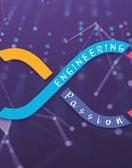In recent years IoT (Internet of Things) is a major trend in technology, IoT has made our world smarter than ever. There are several thousands of different IoT development boards available in the market, each one having its particular advantages and disadvantages. Therefore, beginners in this industry find it difficult to choose the best IoT board specific to their design.
There are three types of these boards:
- Microcontroller-based boards
- Single-Board Computers
- Cellular-enabled IoT boards
We have already covered microcontrollers, check this article: 10 Best Microcontroller Boards for Engineers and Geeks. Choosing the right type of board depends on several factors. First of all, of course, it depends on the nature of your project. Some other factors include:
- Architecture
- Memory
- Availability
- Power
- Compatibility
- Cost
- Development support
These boards have some common advantages like they can be used for prototyping and thus the learning process becomes faster for students. It also disregards using long wires, debugging, and printed circuit boards.
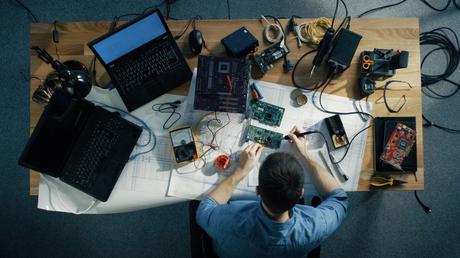
Engineers, enthusiasts, and programmers also use these development boards for making DIY (Do-it-yourself) projects and for learning purposes. We have researched and taken the above factors into consideration and have compiled a complete list of the “Top 10 IoT Development Boards” you can use for your IoT project. Let’s check the list!
#1 Raspberry Pi 4 Model B
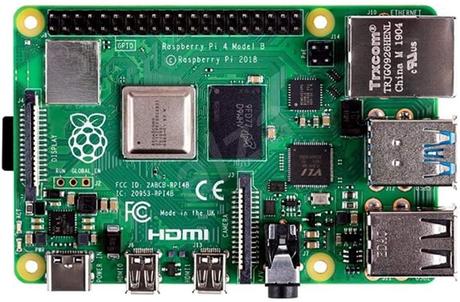
Raspberry Pi is the most advanced and powerful board available in the market. It is mostly used by engineers and technologists for making small and big scale IoT projects. Raspberry Pi falls in the category of a single-board computer. Thus, they are also known as mini computers. There are several different versions of the Raspberry Pi development board. The latest edition launched is Raspberry Pi 4 which is a faster and updated version of its previous version Raspberry Pi 3.
Some feature of Raspberry Pi 4 Model B includes Quad-core Cortex-A72 processor 64-bit SoC at 1.5 gigahertz. It comes with variant RAM (LPDDR4) versions including 1GB, 2GB, and 4GB. More features include 5.0 gigahertz wireless connectivity, Bluetooth version 5.0, four USB ports including two 2.0 and two 3.0 USB ports. It also supports SD cards.
To make it simple for developers to build projects, Raspberry is a powerful minicomputer which allows you to install various packages like Java Python or Node.js with up to 40 GPIO Pins. With all these features, Raspberry is one of the best IoT development boards which gives you powerful performance for any IoT project at a decent cost.
#2 Arduino Uno
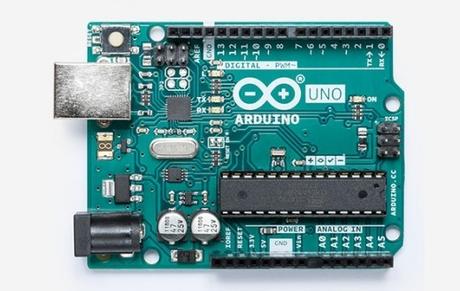
If you are a newbie in the IoT industry and want to learn projects simply and easily, Arduino Uno is the best available board for you. It is one of the popular and favorite boards among engineers and geeks in various fields. It is also said that Arduino Uno was among the first boards developed for IoT and artificial intelligence projects. It falls in the category of microcontroller-based boards.
Although Arduino Uno is a simple board; it provides you powerful and efficient performance at a relatively lower cost. That’s why it’s famous and almost everyone’s favorite choice, its community has grown to a large number, and many new projects are developed by young minds every day using Arduino.
Some of the Arduino Uno board’s features include 6 analog pins and 14 I/O pins. It comes with 32KB flash memory which can compute complex operations and store complex logic and codes. Arduino Uno is based on the Atmega328P microcontroller having a USB port, header, reset button, and power jack. And it weighs only 25 grams, it also comes with a 16MHz Clock speed.
#3 Arduino MKR Series IoT Boards
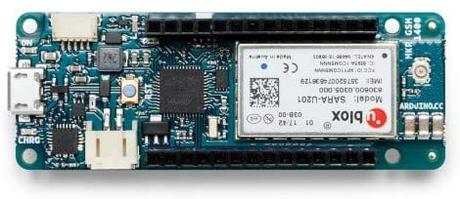
Arduino, the most used and most popular board for electronics development has killed it with its MKR family board. Arduino has launched 5 new development kits with in-built connectivity to ease the development of connected hardware products. These include Arduino MKR 1400 with cellular, Arduino MKR Fox 1200 with SigFox, Arduino MKR WAN 1300 with LoRA, Arduino MKR WIFI 1010 with Wifi, and Arduino MKR NB 1500 with NB-IoT.
MKR GSM 1400 combines the functionality of Arduino Zero and global GSM connectivity. The GSM module attached to the board supports GSM’s range 880/915 MHz. MKR FOX 1200 combines the functionality of Arduino Zero and SigFox connectivity. It is the ideal choice for geeks and engineers wanting to design IoT projects with minimal previous experience in networking having a low power device.
Available on Amazon!
#4 NVIDIA Jetson Nano
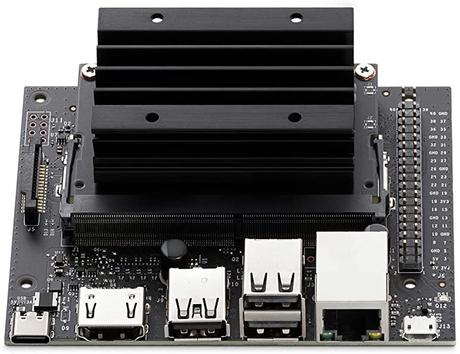
Jetson Nano is another single-board based development kit for both AI and IoT based projects and prototyping. The board is used for projects where high graphical performance is required, as it has a built-in NVIDIA graphical processing unit (GPU) installed. The board also has a computing platform installed, which gives it the ability to make artificial intelligence models rapidly. Thus, Jetson Nano provides you good performance (very similar to Raspberry Pi models) for projects like artificial intelligence, image processing, the internet of things, and machine learning.
You can choose this board specifically if you are working on a project based on artificial intelligence. Features and technical specifications of Jetson Nano board include 128 core maxwell GPU, Quadcore A57 processor at 1.43 GHz, 4GB LPDDR4 memory, microSD card support, HDMI port, display port, 5 USB support including four 3.0 and one 2.0 ports.
Available on Amazon!
#5 Intel Edison

Intel Edison is yet another powerful single board-based category development board for IoT prototyping. The Intel board is built for making advanced IoT projects. Intel is well-known for making high-performance and efficient processors for computers. Thus, this board would not disappoint you if you are planning to go with it and build powerful and advance IoT projects for the engineering industry.
Intel Edison is available in two versions including Arduino compatible board and a smaller board for making simple projects. It comes with dual-core, Wi-Fi support, Bluetooth 4.0 connectivity, and 4GB flash memory. The board supports around 16 digital I/O pins, 4 PWM output pins, 6 analog pins, 1 I2C port, and 1 Rx/Tx port. It is a bit expensive as compared with other IoT development boards, however, its features and high performance make the price tag reasonable.
Available on Amazon!
#6 Udoo Neo

Udoo Neo is one of the few boards available which has the features of both Arduino Uno and Raspberry Pi development kit. The port/pin construction is very similar to the Arduino Uno board and it performs the same as a single board-based mini-computer like Raspberry Pi. In terms of power and efficiency, it gives you similar performance, like any ordinary desktop computer.
Unlike other boards it has two cores, ARM cortex M4 and ARM cortex A9 thus giving the fastest output response possible. The technical specification includes sensors support, Wi-Fi and Bluetooth connectivity, Android support, 1GB RAM, a micro HDMI port, and top programming platforms installation support like Java, Python, and Node.js.
#7 Adafruit FONA
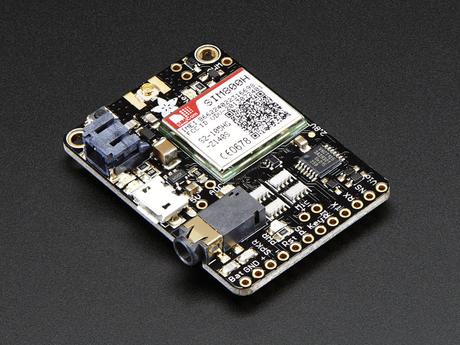
Adafruit Fona is one of the best cellular-enabled IoT development board. The fundamental advantage of using a cellular-enabled IoT board is that you can add your message to the project in the form of text or voice. The board enables you to connect it with any network operator. The most important advantage of Adafruit Fona is that you can make calls or receive it remotely using only a telephone receiver.
You can also receive FM signals for radio broadcasting. This board is ideal for geo-restriction projects for example you can program it to receive notifications and alerts when it moves out of a specific place or region. It has Quad-band 850/900/1800/1900MHz, PWM and Buzzer vibrational motor control, AT command with auto band detection, 4-pole TRRS headphone jack, ports for external 8Ω speaker, an electret mic, level shift circuit, and many more.
Available on Amazon!
#8 Particle Electron
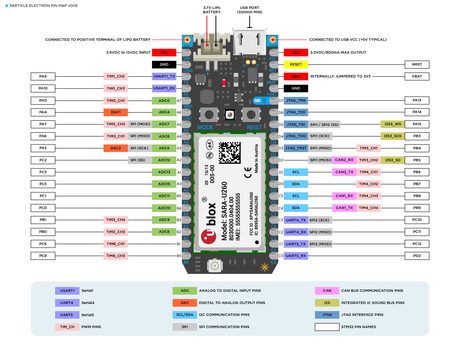
Particle electron is also a cellular-enabled development board for prototyping and IoT projects. It comes with fully cellular standards, supporting both 2G and 3G SIM cards and software for building cellular projects. You also get a cellular module along with particle electron such that it allows you to connect devices with an internet connection easily.
You do not need to do any kind of configuration; particle electron comes with pre-installed modules and software. You can make GPS tracking projects using this board conveniently, for example, to track objects and devices. Technical specifications include ARM M3 microcontroller, 128 KB RAM, one MB flash, antenna, USB support, 30 GP I/O pins, Battery, LEDs, and a Particle SIM card.
Available on Amazon!
#9 Google Dev Board
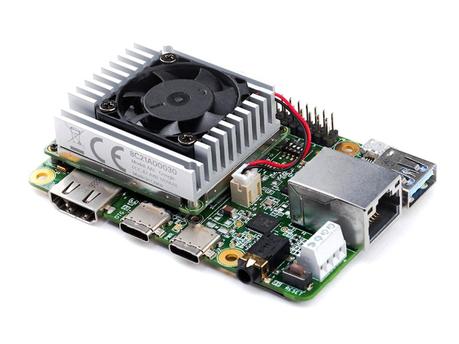
Google Development board is also an amazing kit for prototyping and making artificial intelligence projects. It has specific support for TensorFlow to make advanced IoT prototyping. Its framework is developed and supported by Google. You can use this board to make web-based projects and projects like a personal assistant like Siri.
The Google Dev Board is so powerful that the on-board Edge TPU coprocessor is capable of performing 4 trillion operations (tera-operations) per second (TOPS), using 0.5 watts for each TOPS (2 TOPS per watt). It is a single-board computer with system-on-module and wireless connectivity support. The board has a quad Cortex-A53 Cortex-M4F processor, GC7000 Lite Graphics, 1 GB LPDDR4, 8 GB flash memory, four different types of USB support, 3.5mm audio jack, and Wi-Fi and Bluetooth 4.2 support.
Available on Amazon!
#10 Pycom Fipy
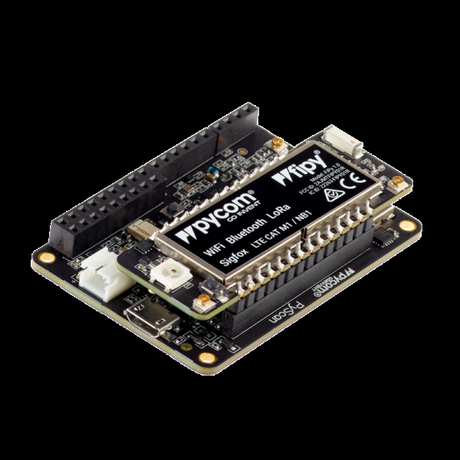
Pycom Fipy is also one of the best single-board based minicomputers. It allows you to have 5 different types of connectivity options. These include IoT cellular, Wi-Fi, Bluetooth, Sigfox, and Lora. Thus, you can leverage these multiple options on one single board. Pycom Fipy is more of a modern development board you can use with modern tools and software than the Arduino Uno board family. It connects you to a global LP wide area network (WAN).
It also gives you accurate measurements and calibrations using advanced equipment and software. It has a range of up to 50 km. More important specifications include two 64-bit timers with PWM, 22 general-purpose I/O pins, low energy Bluetooth, 16 Mbps Wi-Fi connectivity, 4 MB RAM, 8 MB flash memory, an extra ULP-coprocessor that can maintain GP I/O Pins, and many more.
Available on Amazon!
Note: As an Amazon Associate we earn a small amount of commission from each sale on Amazon.
IoT technology has a very promising uptrend in recent years. Part of the upward trend stems from the fall of device prices. It enables every electronic device to connect with the internet such that you can control and manage all devices remotely. Engineers and geeks use the development boards to build their IoT projects.
The boards mentioned above can be used to make prototypes and real-time IoT projects. These boards are very easy to use and lots of tutorials for building IoT projects are available on YouTube. Programming experience is a plus if you want to work with microcontrollers or microprocessor boards, however, it’s not mandatory as you can find the source codes from online ready to use libraries.
